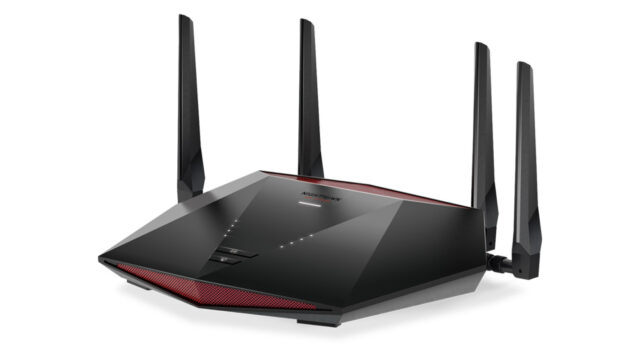While many people have just upgraded to Wi-Fi 6 and some may be contemplating a move to Wi-Fi 6E, their successor is already in the works.
Wi-Fi 7 is the next significant advancement on the horizon, and it, like its predecessors, promises faster connections, lower latency, and the ability to manage more connections gracefully than ever before.
If you want to improve your Wi-Fi now, Wi-Fi 7 is not the solution because it is still more than a year away (and, realistically, it will be a good while longer than that before most of us should consider it).
If you need to upgrade quickly, consider learning how to buy a router before diving into our recommendations for the best Wi-Fi routers and mesh Wi-Fi systems.

What is Wi-Fi 7?
The 7th generation of Wi-Fi promises significant improvements over Wi-Fi 6 and 6E, with speeds up to four times faster. It also includes ingenious advancements to reduce latency, increase capacity, and improve stability and efficiency.
In the old naming convention, it was IEEE 802.11be, Wi-Fi 6 was IEEE 802.11ax, and Wi-Fi 5 was IEEE 802.11ac. Wi-Fi 7 will, like previous standards, be backward compatible.
However, in order to take advantage of the new features and improved performance it promises, you must upgrade your devices. This entails purchasing new routers and access points, as well as new smartphones, laptops, televisions, and so on.
You can also read: 5G Vs. WiFi: Everything You Need to Know
Benefits of Wi-Fi 7
Wi-Fi 7 will be faster, support more connections, and be more adaptive in order to provide consistent low-latency performance.
These advantages will aid in the delivery of high-quality video and improved cloud gaming, as well as serving AR and VR applications that require high throughput and low latency.
It also addresses congestion and interference, bringing tangible benefits to areas with densely packed devices or overlapping neighboring networks. The latter is especially important for businesses and larger venues.
Wi-Fi 7 Vs.Wi-Fi 6E
You may be wondering what distinguishes Wi-Fi 7 from Wi-Fi 6E, which promises similar benefits over previous standards by opening up the 6-GHz band. Especially since Wi-Fi 7 will use the same three frequencies (2.4 GHz, 5 GHz, and 6 GHz). Here are some notable enhancements.
YYou can also read: Eero Pro 6 Mesh Wifi System with Fire TV Cube
Wider Channels
Each band is subdivided into channels. The 2.4-GHz band is divided into 11 channels of 20 megahertz (MHz). The 5-GHz band has 45 channels, but they can be combined to create 40-MHz or 80-MHz channels rather than being limited to a width of 20 MHz.
The 6-GHz band supports 60 channels, which can be as wide as 160 MHz with Wi-Fi 6E. Wi-Fi 7 supports channels with a bandwidth of up to 320 MHz. The more data that can be transmitted, the wider the channel.
Consider how much traffic a single-lane road can handle in comparison to a three-lane highway or a six-lane superhighway.
Multi-Link Operation
Multi-Link Operation is possibly the most exciting advancement in Wi-Fi 7. (MLO). Every previous Wi-Fi standard connected two devices on a single frequency band.
A tri-band Wi-Fi 6E router, for example, connects two devices on a single band on a fixed channel (the router decides whether to connect on the 2.4-GHz, 5-GHz, or 6-GHz band).
MLO can combine multiple frequencies from different bands into a single connection. A Wi-Fi 7 router can connect to a Wi-Fi 7 device simultaneously across two or more channels in different bands.
MLO may enable wider channels capable of transmitting more data—to return to our highway analogy, you can send traffic on both the highway and the superhighway at the same time.
Although speed isn’t always the most important factor, MLO allows for more efficient performance. A Wi-Fi 7 router can account for congestion and other interference and transmit on the best channel to avoid it, switching to maintain a stable connection and low latency.
It also improves on existing technologies such as OFDMA, MU-MIMO, and TWT, as discussed in our Wi-Fi 6E explainer.
You can also read: Best WiFi Extender
Higher QAM
Quadrature Amplitude Modulation (QAM) is a method of transmitting and receiving data over radio waves. The more information you can fit in, the higher it is. It supports 4K-QAM, Wi-Fi 6 only 1024-QAM, and Wi-Fi 5 only 256-QAM.
Signal strength, background noise, and interference all complicate the potential benefits. As a result, as QAM increases, the range decreases, necessitating a stronger signal.
As a result, the upgrade to 1024-QAM in Wi-Fi 6 provided approximately a 25% data rate increase over Wi-Fi 5. The upgrade to 4K-QAM in Wi-Fi 7 results in a 20% increase in peak performance.
Wi-Fi 7 release date
The first Wi-Fi 7 devices and routers are unlikely to appear for at least a year, but the new standard is taking shape.
Qualcomm has announced the Wi-Fi 7 chipset and Networking Pro Series platform, which can provide up to 33 Gbps of quad-band connectivity across 16 streams.
Partners are already collaborating to incorporate its technologies into devices. Wi-Fi 7 technologies have also been announced by Broadcom and MediaTek. More vendors will undoubtedly announce their plans in the coming months as the Wi-Fi Alliance finalizes and officially designates the new standard.
Even if Wi-Fi 7 is released, it will not completely replace Wi-Fi 6. For many years to come, the two will most likely coexist as complementary technologies.
You can also read: Cat 6: Best Ethernet Cables
Would you like to read more about Wi-Fi-related articles? If so, we invite you to take a look at our other tech topics before you leave!









